Component Services is one of the essential administrative built-in tool, allows users to manage and configure COM+ applications, Distributed Transaction Coordinator (DTC), and other system services. This component services plays a important roles while troubleshooting and optimizing system-level operations. Component Services with standard user permissions may limit your ability to perform advanced configurations or resolve system issues effectively. To unlock its full potential, it is essential to run Component Services as administrator.
Elevated admin rights will ensures you have elevated privileges to manage system components and perform tasks without any permission restrictions. In this tutorial, I’ll explore the steps to run Component Services as an administrator on Windows 11.
Various Ways to Open Component Services with Administrative Privileges on Windows 11
IMPORTANT: Running applications as an administrator grants elevated privileges that can significantly affect your system. Please use caution when doing so, as it can lead to Unintended System Modifications, Security Vulnerabilities, Accidental Data Loss, Unauthorized Access, Irreversible Changes, etc.
1. Quick Way to Access Component Services as Administrator using the Start menu
This is the easiest way to open this service with Administrative Privileges on Windows 11.
- Go to the Start menu, and search for Component Services. You can also use the Keyboard Shortcut WinKey + S to access Start Search.
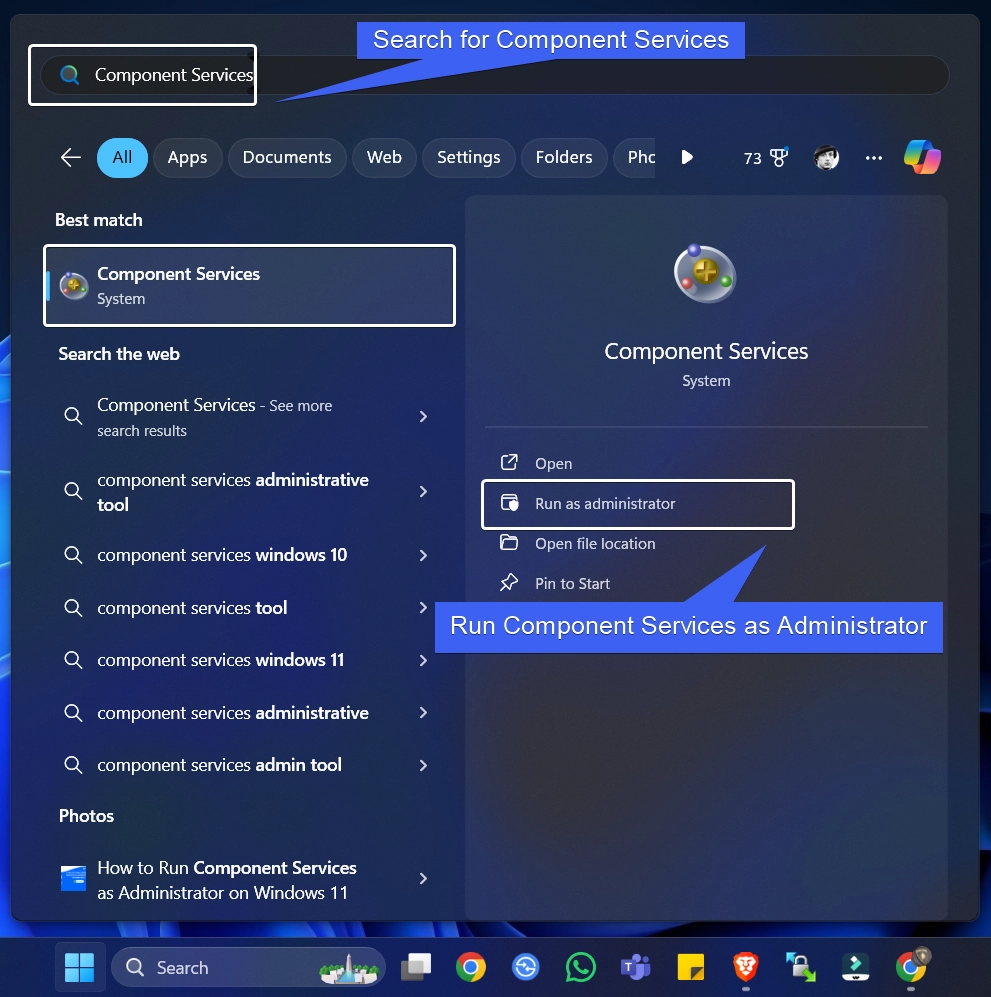
- Right-click on the Component Services and click Run as Administrator.
- The system (User Account Control) will confirm and open Component Services as Admin on Windows 11.
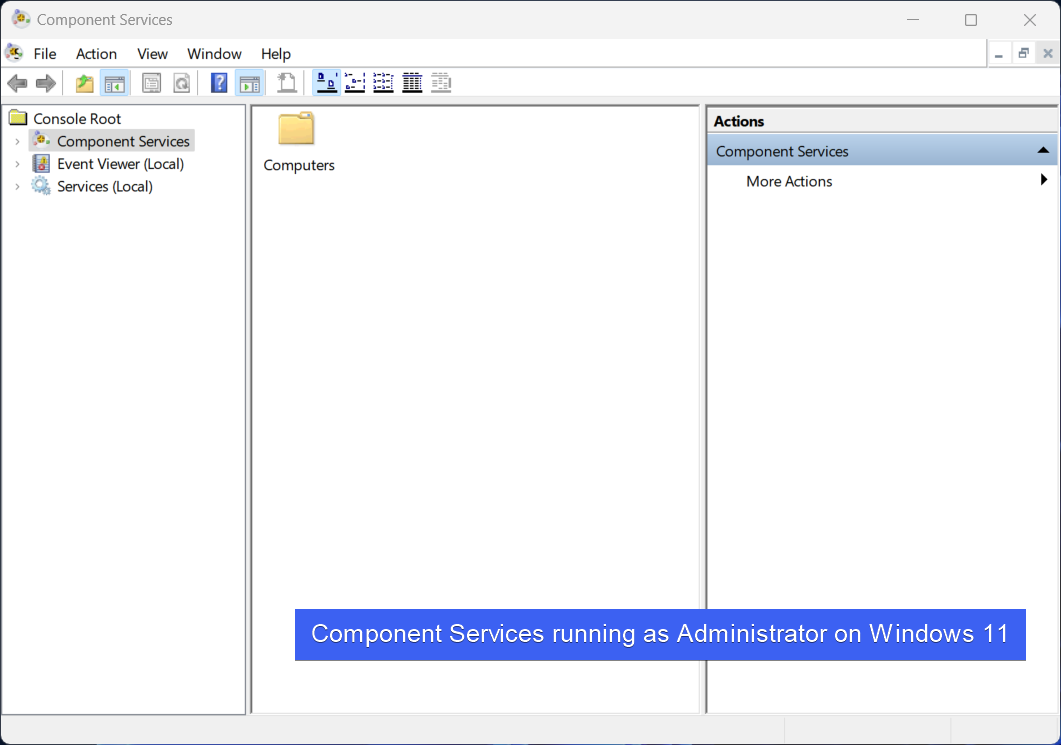
2. How to Run Component Services as Administrator using the Run Command?
- Go to the Run Command. The easy way to access the Run Command is to use the Keyboard Shortcut, WinKey + R.
- Type the command
dcomcnfgand press CTRL + SHIFT + ENTER. This will prompt the system to execute the command with Administrative Privileges.

- The system will confirm and open Component Services with Administrative Privileges.
3. Create a New Task to open Component Services with Elevated Permissions using the Task Manager
- Right-click on the Taskbar and click Task Manager. You can also use the shortcut CTRL + SHIFT + ESC. This combination will open Task Manager directly.
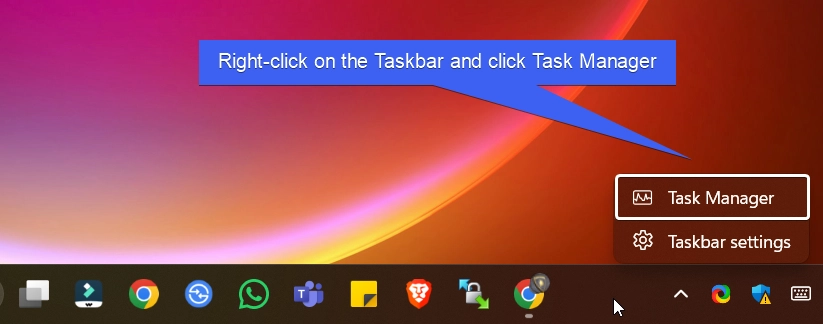
- In the Task Manager, under Processes, click on Run New Task. Create New Task dialog will pop up now.
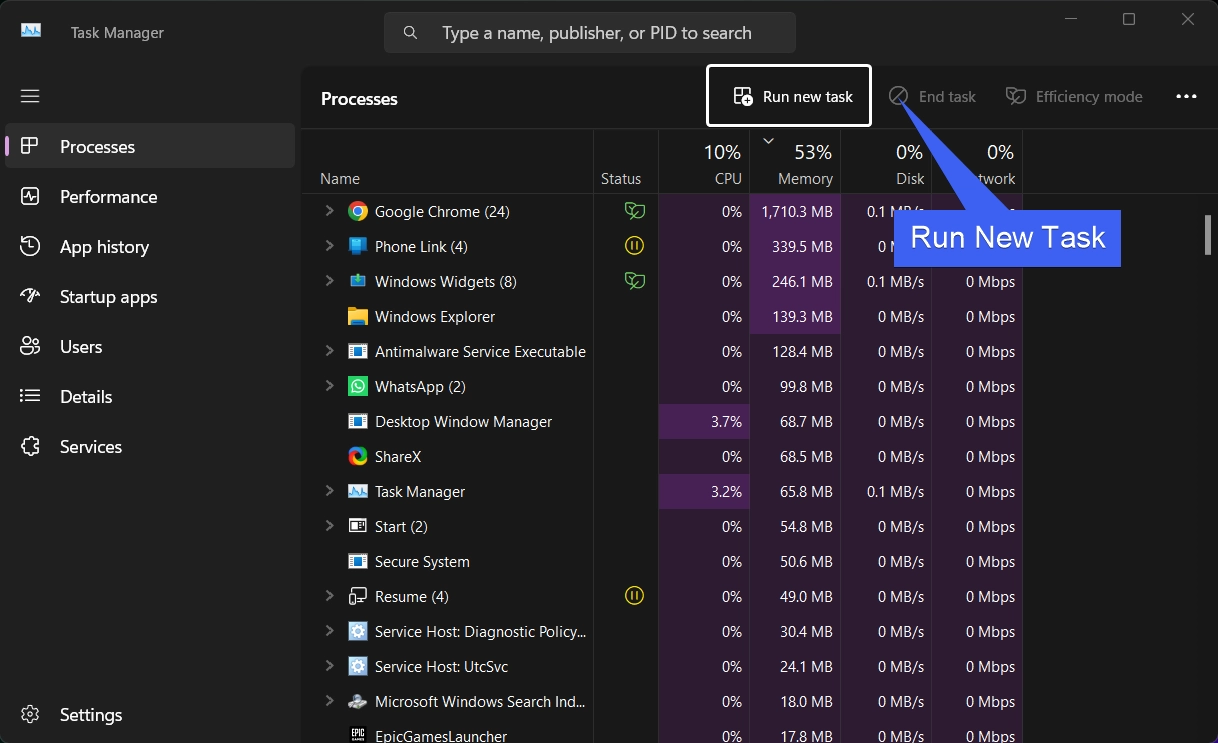
- Type the command
dcomcnfgand enable the checkbox “Create this Task with Administrative Privileges“. Finally, click OK.
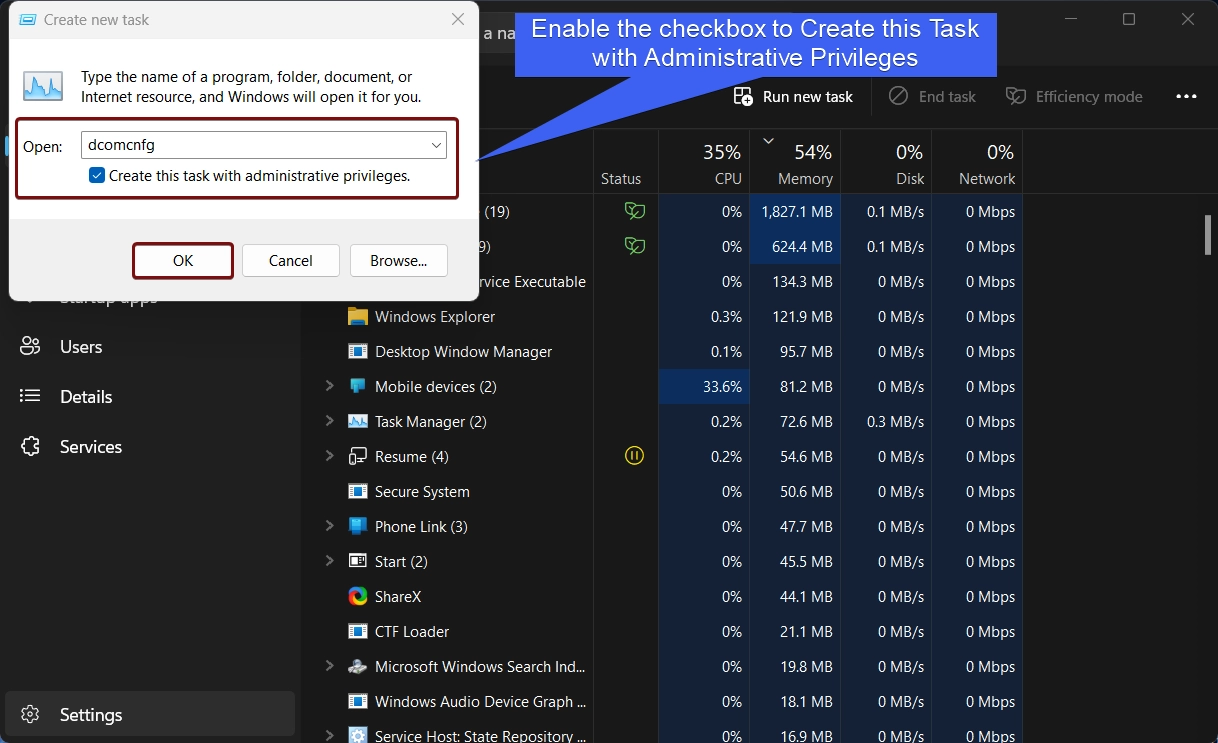
4. Always Open Component Services as Administrator on Windows by Creating a Dedicated Desktop Shortcut
This method can be handy for users who are using Component Services frequently as Administrator. Here, we will create a dedicated Desktop Shortcut.
- Right-click on the Empty space of the Desktop, and click New > Shortcut.
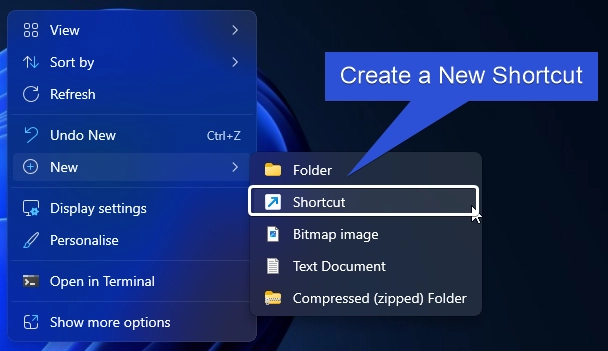
- The Create Shortcut dialog box will open now. In “Type the Location of the Item“, enter the command
C:\WINDOWS\system32\dcomcnfg.exeand click Next.
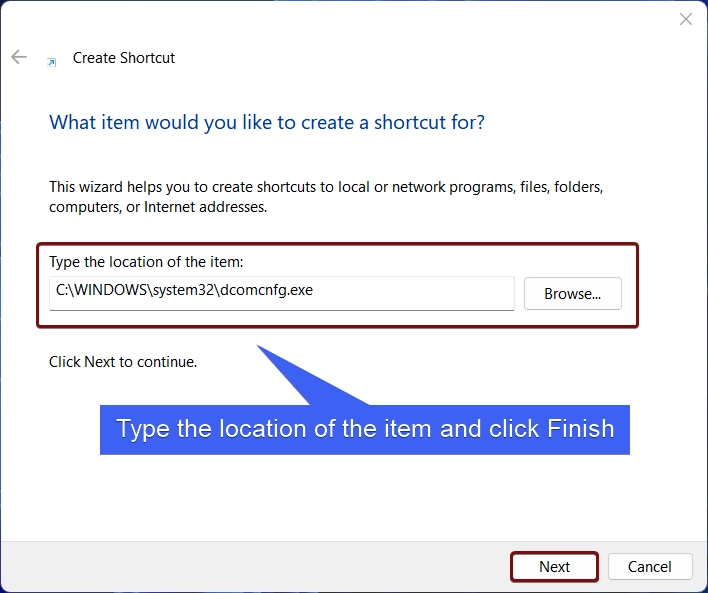
- The system will assign the shortcut name
dcomcfng. Kindly change it to Component Services. Finally, click Finish.
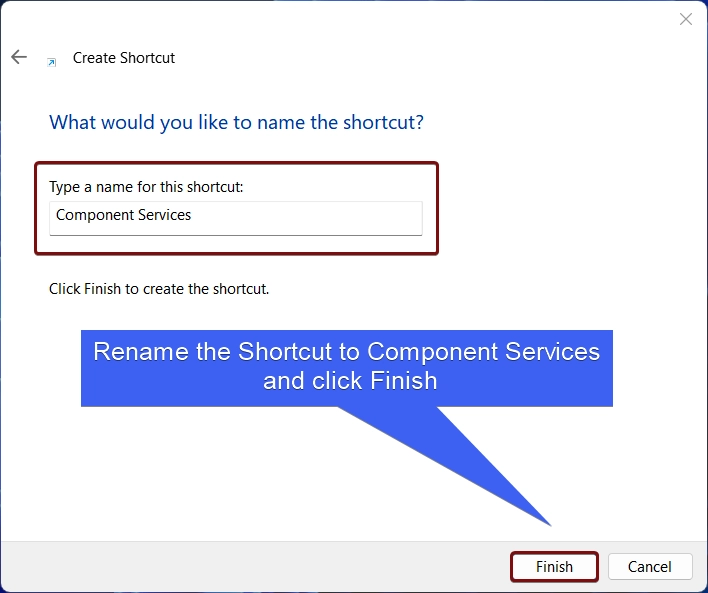
- Component Services Desktop Shortcut will be created.

- Right-click on the Shortcut and click on Properties.
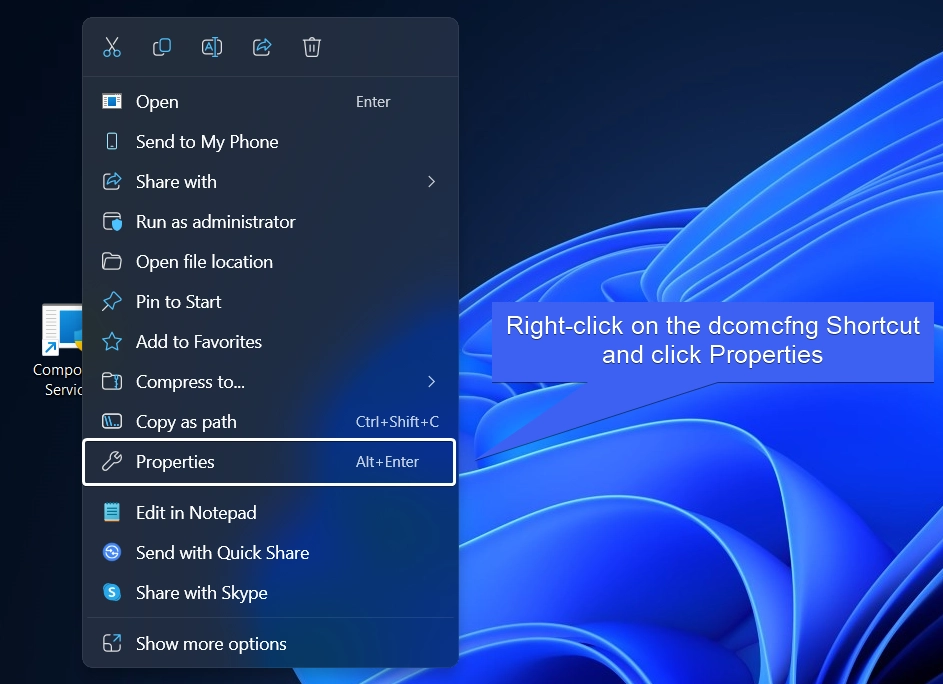
- Component Services Properties will open now. Click Advanced.
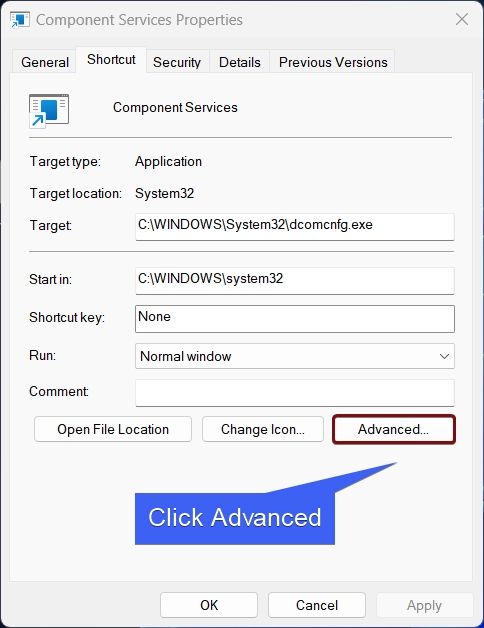
- In Advanced Properties, make sure to enable the checkbox “Run as Administrator“. Finally, click OK, and then Apply.
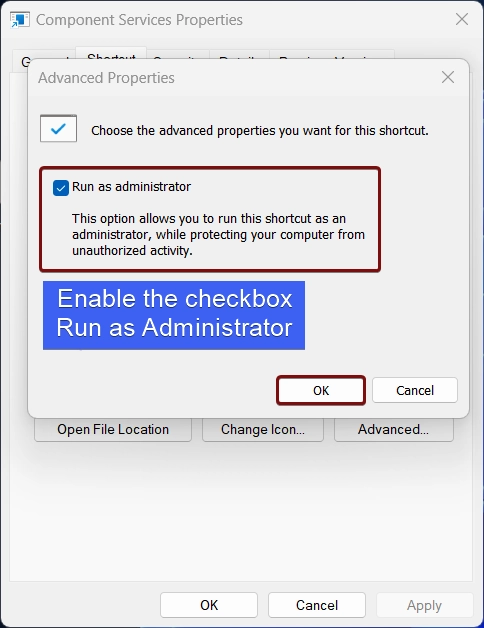
- This option allows you to run this shortcut as an administrator, while protecting your computer from unathorized activity.
5. Open Command Prompt or Windows PowerShell with Elevated Privileges and Run Component Services on Windows 11
- Go to the Run Command using the shortcut WinKey + R.
- Type
cmd(For Windows PowerShell, use the commandpowershell), and press CTRL + SHIFT + ENTER.
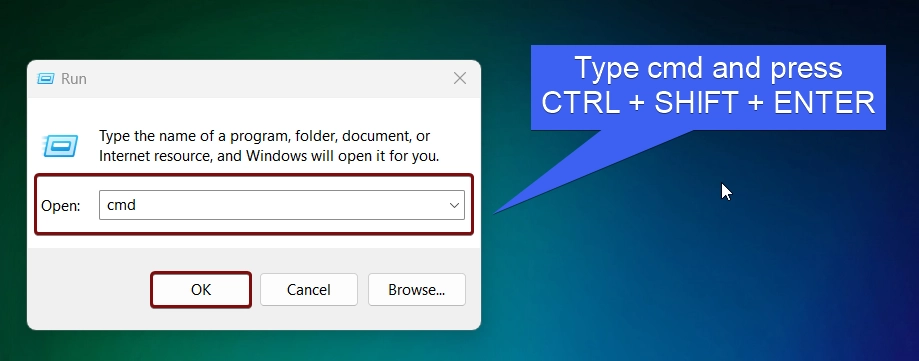
- This will prompt the system to execute this command with Administrative Privileges. In the Command Prompt, execute the following command.
dcomcnfg
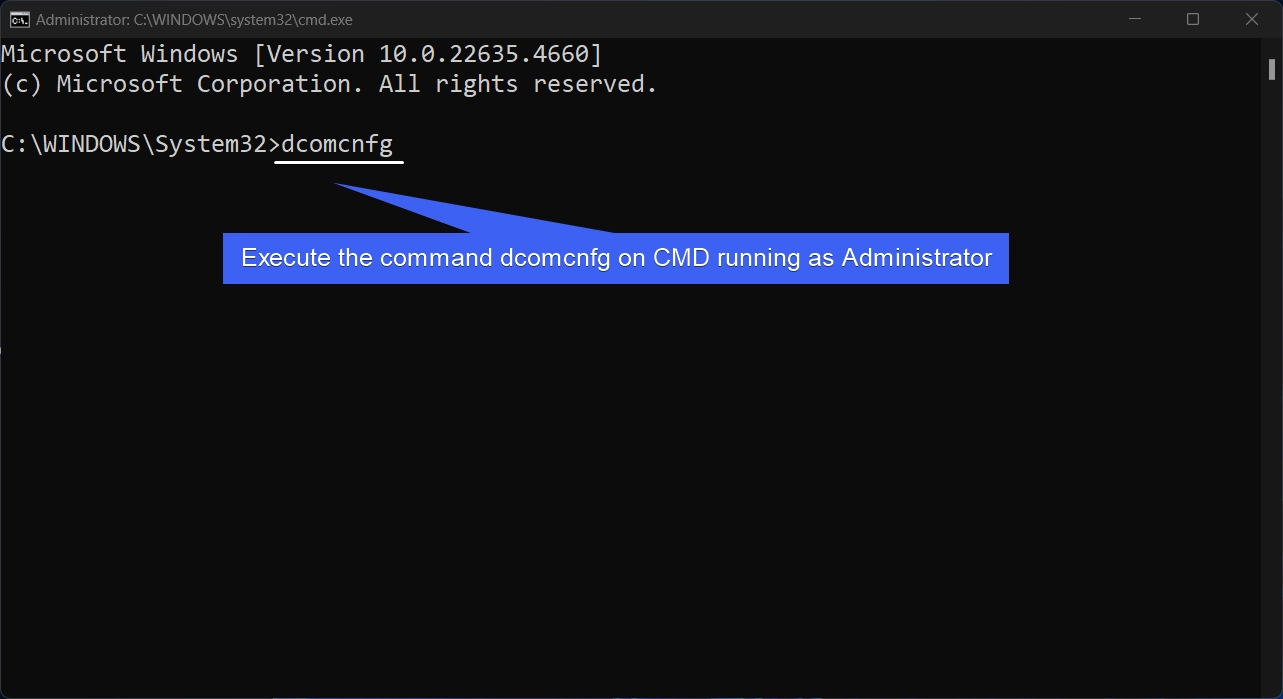
- Now, Component Services will run as Admin on Windows 11.
6. Launch Component Services as Administrator using File Explorer
- Use the Shortcut Ctrl + E and open File Explorer on Windows 11.
- In the search, paste the following path and click Enter.
C:\WINDOWS\system32

- The System32 Folder will open now. Search and Locate the file dcomcnfg.exe and right-click on that and click on “Run as Administrator”.
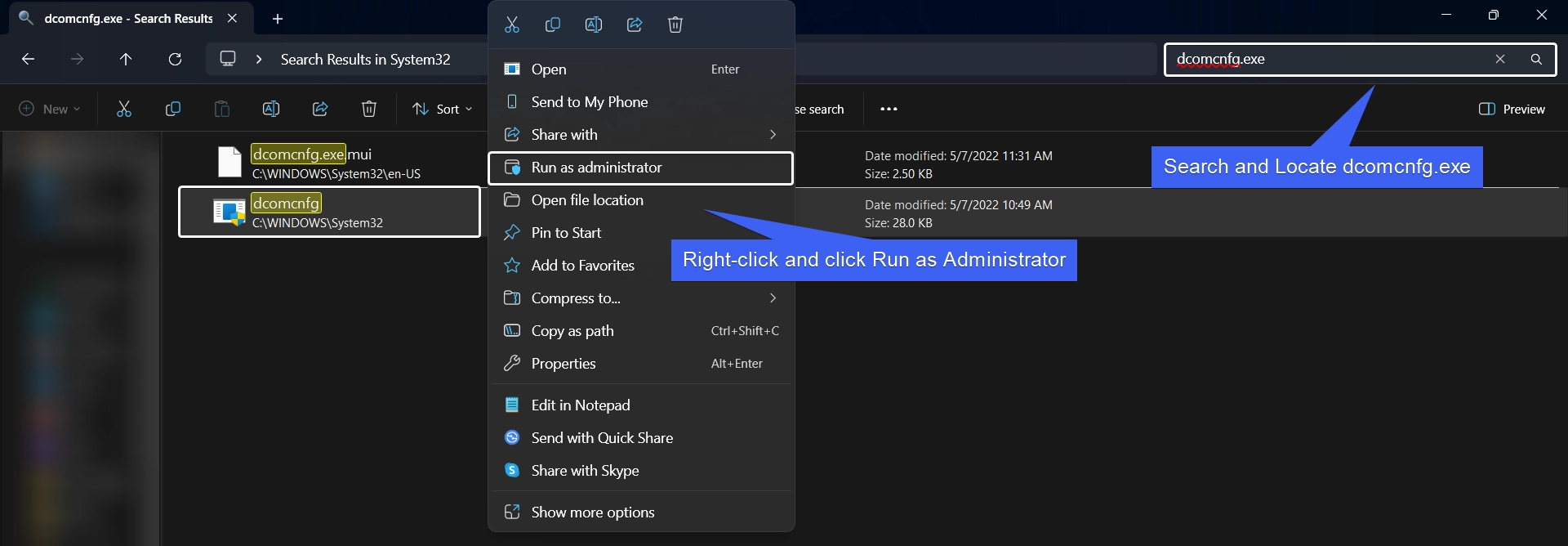
Be Cautious while Running an App with Administrator Privileges
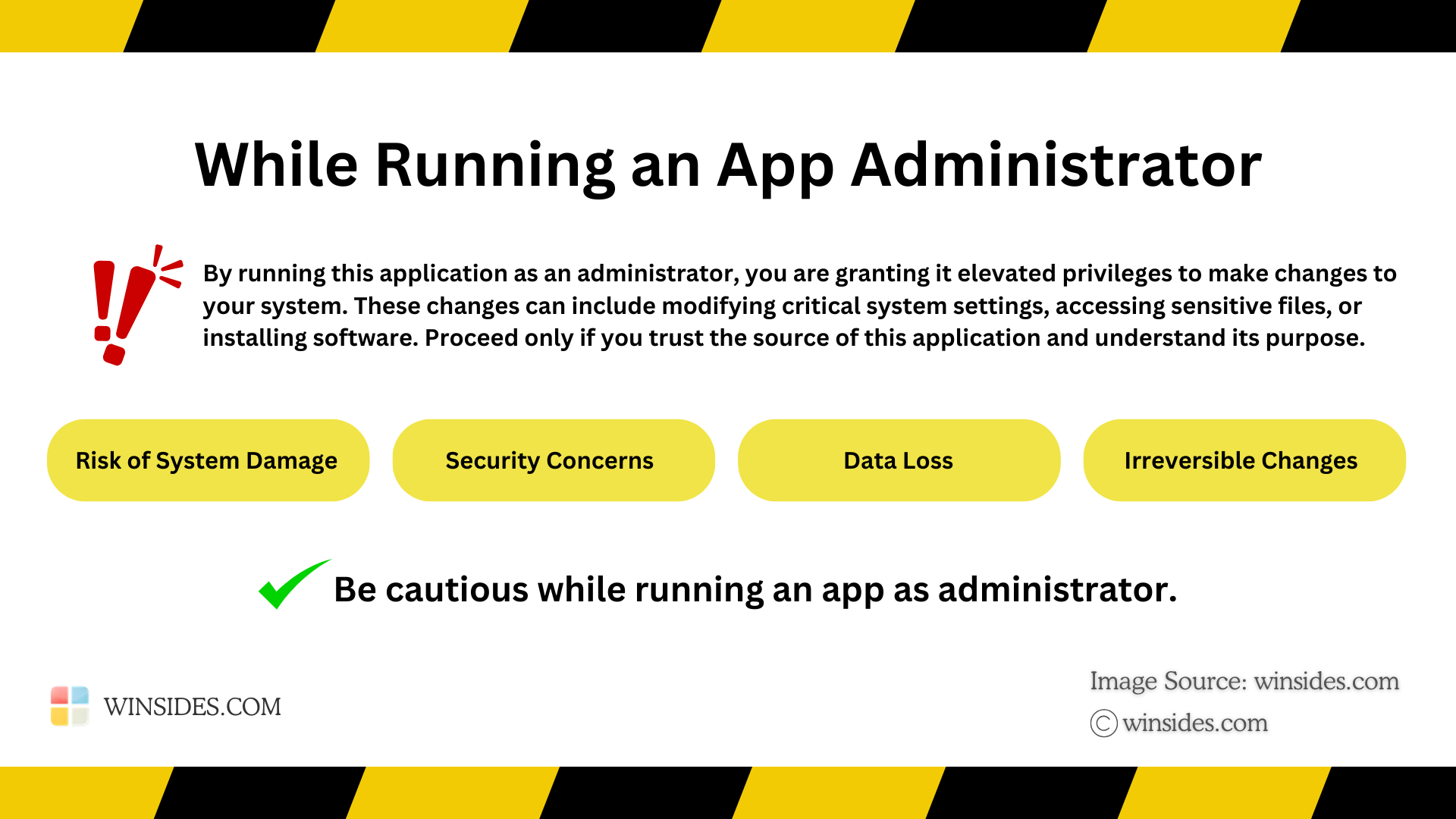
Running Component Services as Administrator on Windows 11 grants it elevated privileges, which can potentially bypass system security restrictions. Please proceed with care and only run trusted applications in this mode. At Winsides.com, we advise our users to use Administrator privileges only when absolutely necessary to perform tasks requiring elevated rights. Misuse of administrative privileges may lead to System Vulnerabilities, Data Loss, System Instability, Security Concerns, Irreversible Changes, etc.
Have Queries?
If you have any queries, or if you find difficulty following the above steps, kindly let us know in the Comment Section. For more interesting articles, stay tuned to Winsides.com. Happy Computing! Peace out!
 How to Check PC Specs without Logging into Windows 11?
How to Check PC Specs without Logging into Windows 11? How to Enable HDR Video Streaming on Windows 11?
How to Enable HDR Video Streaming on Windows 11? How to Clean Temporary Files on Windows 11?
How to Clean Temporary Files on Windows 11? How to Use ODBC on Windows 11?
How to Use ODBC on Windows 11?